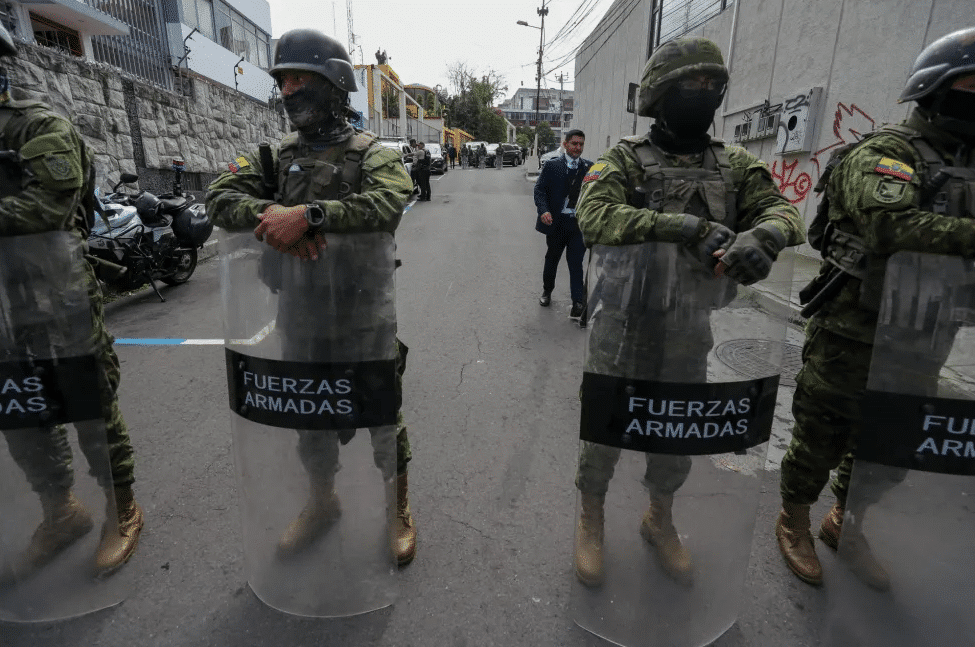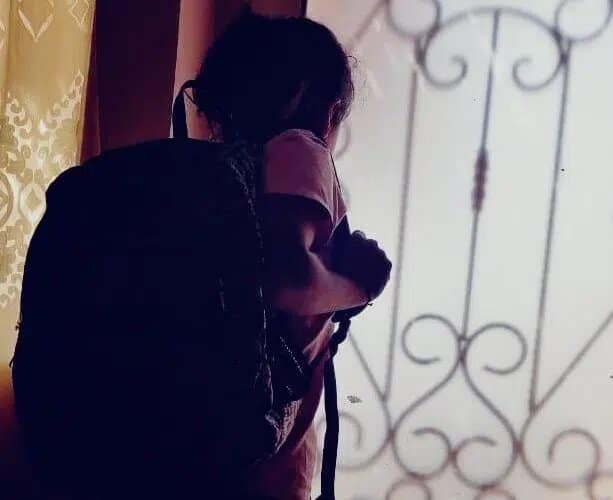1 de diciembre 2021

The Return of the Military

PUBLICIDAD 1M
PUBLICIDAD 4D
PUBLICIDAD 5D
The released Nicaraguan political prisoner was taken hostage by a cartel in Mexico. After being freed, she managed to reach the US where she’s seeking

Ana Gabriela Nicaragua had only a backpack with two changes of clothing when she was freed by the Jalisco Cartel in Mexico, after a terrifying kidnapping. Courtesy photo
“Nothing will happen to you; don’t worry, we’re not going to torture you,” were the words her kidnappers from the Jalisco Cartel in Mexico repeated over and over to the eleven hostages they captured on November 14th. That phrase is still echoing in the mind of Ana Gabriela Nicaragua, who went from being a released political prisoner in Nicaragua to becoming a kidnap victim while trying to reach the United States in search of asylum. Like many Nicaraguans, Ana was fleeing the persecution and criminalization of the Ortega-Murillo regime in her home country.
Ana Gabriela left Nicaragua on November 3rd, together with her partner and his son. They crossed into Honduras illegally, through the border zone of El Espino. Although she didn’t have the economic resources needed for the trip, the constant surveillance, harassment, and threats of being accused of a new crime made the family decide “to leave with the little we had.”
Over the next seven days, the former political prisoner crossed Honduras, Guatemala and part of Mexico. However, on the night of November 14, she was kidnapped, along with her partner and son, another six Nicaraguans, and two Hondurans, all traveling together towards the US border.
“We were traveling through Villa Hermosa, in Tabasco, when the Jalisco Cartel kidnapped us. A bunch of men, armed to the teeth, appeared: faces hooded, wearing bulletproof vests with the Mexican coat of arms on their uniforms, and carrying high-power weapons. This violent group detained the vehicles we were traveling in, intimidated the drivers, forced us to get out and took us to a warehouse,” the released Nicaraguan political prisoner told Confidencial.
When they reached the warehouse, the kidnappers took everything they had: cellphones, clothes, money, and all other valuables that interested them.
“We were all crying, and so were the children. All of us were very nervous. They then took us to a room in the cellar and told us to take out absolutely everything. They went through it all and began taking our belongings. They took my cell phone and 1,960 dollars. We were all terrified of the many men, armed with machetes and special large and heavy clubs for torture,” she detailed.
Ana Gabriela commented that she and the other ten people kidnapped with her weren’t beaten or physically tortured, but that they did suffer five days of “psychological torture”.
In one of the warehouses where they were held during their five days as hostages, they witnessed several instances of physical torture suffered by some unidentified men, who had also been taken to those places.
“The first day that they took us to one of their buildings, they also arrived with a man who wasn’t from our group and began to torture him: they grabbed him by the neck; they handcuffed him; and they beat him so hard that his screams resounded like thunder in the warehouse. That made all of us shake with fear and feel like we suffered every one of those blows right along with him,” she stated.
After the first 24 hours, things got worse. Another man, who they also couldn’t identify, was taken to the warehouse and also brutally beaten. “They took a machete and cut off all the fingers of one hand, right in front of us. His suffering was so great that the man begged them to kill him, to shoot him in the head, because he couldn’t stand it anymore,” Ana Gabriela described.
The former political prisoner noted that, ironically, every time they witnessed these tortures, the kidnappers would approach the group to underline that “we shouldn’t worry, that nothing was going to happen to us, that they weren’t going to torture us. But we were already victims of psychological torture, because after that they’d tell us that if we didn’t do what they wanted, in the end that’s what would happen to us.”
Ana Gabriela recalled that after watching the second man being tortured, a person who seemed to be the “boss” came to the warehouse. He handed each one of the adults their cellphones and ordered them to unblock them and to call their families to ask for help obtaining the money for their release.
“They demanded a price of one million Mexican pesos – US $50,000 - for the entire group of eleven people that were there. Each one, including the children, needed to pay US $5,000 for their release, but we had to obtain the entire sum, or nobody was leaving,” she stated.
The people involved were warned not to report the kidnapping or give any details. The hostages were supervised each time they were allowed to contact their families and pressure them for the money, to make sure no one disclosed any details. They were only authorized to “ask for help” obtaining the money.
In contrast with the others, Ana Gabriela decided not to call her family. She did so to keep them from worrying, because they, like herself, are people with very limited financial resources. She wanted to avoid making them feel worse, in case it proved impossible for the group to gather the money.
“I wrote to a friend from the Nicaraguan Political Prisoners Association (UPPN), and told her not to ask me to explain, but that I needed her to help me obtain US $5,000 dollars,” she told us.
Only a few people from the organization responded to her call for help. Her friends only managed to pull together nearly $1,000. Meanwhile, her partner’s family “sold everything” to be able to pay $10,000 for the father and child. They then went to seek a loan, to help Ana put together the rest of the $5,000.
After forcing them all to beg their family members for assistance, the kidnappers moved them to a different storehouse, where some 30 other people were being held under the same conditions.
Most of the kidnap victims in Ana Gabriela’s group managed to obtain the needed $5,000 in the first four days of their kidnapping. Nonetheless, the kidnappers intensified their threats to torture anyone who didn’t comply with the specifics of the ransom they were demanding.
“They began to threaten my partner, because the person sending the money didn’t show the complete voucher. They threatened to torture her the same way they tortured the men we saw in the first hiding place. They showed her the torture club, told her they were going to crush her fingers and cut off her hand, and only stopped after the voucher was sent the way they wanted,” Ana Gabriela recalled.
On November 18, five days after being kidnapped, the group managed to collect the full amount demanded by the cartel. Their kidnappers then ordered them to get ready, because “you’re leaving now”.
“They put our suitcases in the vehicle they were planning to transport us in, and they took us back to the original warehouse. We were all scared to death seeing that same armed group of torturers again. There they gave us back our cellphones, but they didn’t return our money, and they stole the cellphone belonging to my partner’s son. After a wait, they told us they were going to move us,” Ana Gabriela detailed.
The former Nicaraguan political prisoner was now set free once again, this time in the Villa Hermosa Park, together with her partner and son and a Honduran woman. The other six Nicaraguans were released in another park in the same city, while the other Honduran was let out in a soccer field.
“We spent two hours in that park. We didn’t know what to do; we had no money, our cellphones were about to die, and we were still in an area under the Cartel’s control,” Ana Gabriela recounted.
One of the Hondurans opted to split off from the group, while the other ten decided to stay together and continue the journey. They spent a few days in a hotel in Villa Hermosa and later sought a more secure place.
Ana Gabriela told Confidencial that despite all the economic difficulties they then faced in Mexico and all the horrors they experienced on the road, she too wanted to continue the trip with her two family members. There was no returning to Nicaragua, since “jail” was what was waiting for her there.
On November 25, Confidencial learned that Ana Gabriela and the Nicaraguans she was traveling with had reached the US border and turned themselves in to the immigration officials. Yaritza Rostran, another former political prisoner and member of the former political prisoners’ group, confirmed this information. Rostran added that, for the moment, they only know that Ana Gabriela is in one of the immigration detention centers.
This articles was originally published in Spanish in Confidencial and translated by Havana Times
PUBLICIDAD 3M
Confidencial es un diario digital nicaragüense, de formato multimedia, fundado por Carlos F. Chamorro en junio de 1996. Inició como un semanario impreso y hoy es un medio de referencia regional con información, análisis, entrevistas, perfiles, reportajes e investigaciones sobre Nicaragua, informando desde el exilio por la persecución política de la dictadura de Daniel Ortega y Rosario Murillo.
PUBLICIDAD 3D